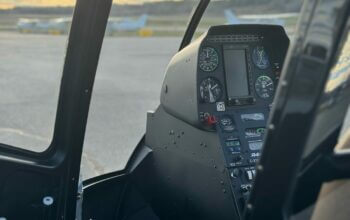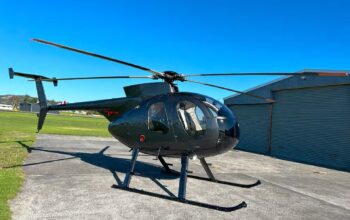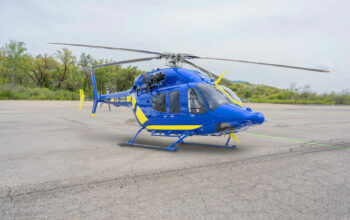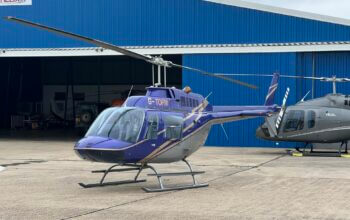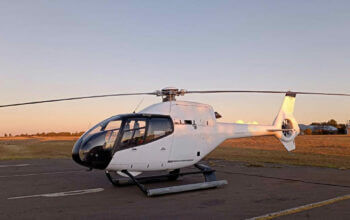Estimated reading time 5 minutes, 39 seconds.
Sikorsky Aircraft Corp. has all but four of the 28 Cyclone helicopters ordered by Canada “in production, assembly or test,” including four on the ramp at Canadian Forces Base Shearwater, N.S., but there is still no sign of operational acceptance by the Department of National Defence (DND).
Louis Chenevert, president of Sikorsky’s parent company, United Technologies Corp. (UTC), acknowledged during a Dec. 13 teleconference with investors and market analysts that the Maritime Helicopter Project (MHP) remained “an open item” subject to further negotiations with the government’s purchasing arm, Public Works & Government Services Canada (PWGSC).
“As you know, the program has had some challenges,” he acknowledged, “but we have made solid progress overall.” He was “assuming” 2013 would see eight more aircraft delivered, significantly fewer than the 19 called for in the original project timeline.
Those 2013 deliveries likely would include a fifth “interim” aircraft, which had been scheduled for 2012. As with the four others already at Shearwater, it would remain a Sikorsky asset, used principally for non-flying training, until DND is satisfied with main transmission “run dry” capability, which had yet to be demonstrated, as well as mission software maturity.
Sikorsky president Michael “Mick” Maurer had said at an earlier meeting that the aircraft itself was “in very good shape” but that “the biggest remaining development challenge is . . . software verification and validation.”
A perennial political hot potato, the proposal to replace the current 1960s-era Sikorsky CH-124 Sea King shipborne helicopters spooled up in the 1980s and was put into gear in July 1992 when the then Progressive Conservative (PC) government chose the AgustaWestland EH-101.
Sixteen months later, the Liberals swept the PCs from power and the new Prime Minister, Jean Chretien, having derided the EH-101 as an expensive “Cadillac,” immediately scrapped the procurement. His administration did eventually choose it for search and rescue work as the CH-149, but that decision seriously delayed the maritime helicopter project.
Despite mounting concerns about the longevity of the Sea Kings, it would be 11 more years – November 2004 – before Sikorsky was eventually contracted by a new Liberal administration to deliver the first Cyclone in late 2008 with a view to completing the new fleet by early 2011.
However, development delays meant that Hull No. 801 did not take place until November 2008, and it soon became apparent that the General Electric engines were not powerful enough for the equipment-laden Canadian Cyclones. An upgraded version was certified last June but, in the meantime, there were additional challenges with technology transfers restricted by the U.S. State Department’s International Traffic in Arms Regulations.
The delays were not unexpected. When the 2004 contract was awarded, Sikorsky’s competitors predicted that the delivery schedule was too ambitious, but those warnings were dismissed by Bruce McKinney, who was managing the project for Sikorsky. “We are well positioned to take this aircraft, which has the latest technologies available in it, and navalize it,” he said, pointing out that the company had “a long history of maritime helicopter development.”
In Ottawa, meanwhile, the finger-pointing has continued with the current Conservative administration trying to blame its Liberal predecessor for choosing Sikorsky. In turn, the Liberals have accused the Conservatives o more mismanagement, noting that there are penalties in the original contract that the Conservatives have not acted on.
Sikorsky could have been fined up to $89 million for missing deadlines, but the government evidently waived the penalty, opting instead for a first round of renegotiations that led to an additional government payment of $117 million for more upgrades and commitments to a new delivery schedule, which also has proven impracticable.
That set the stage for another round of negotiations with Sikorsky, and Chenevert’s latest assessment of the situation is that “we’re working towards a win-win solution to complete the development and to deliver the aircraft to the DND as soon as possible.”






